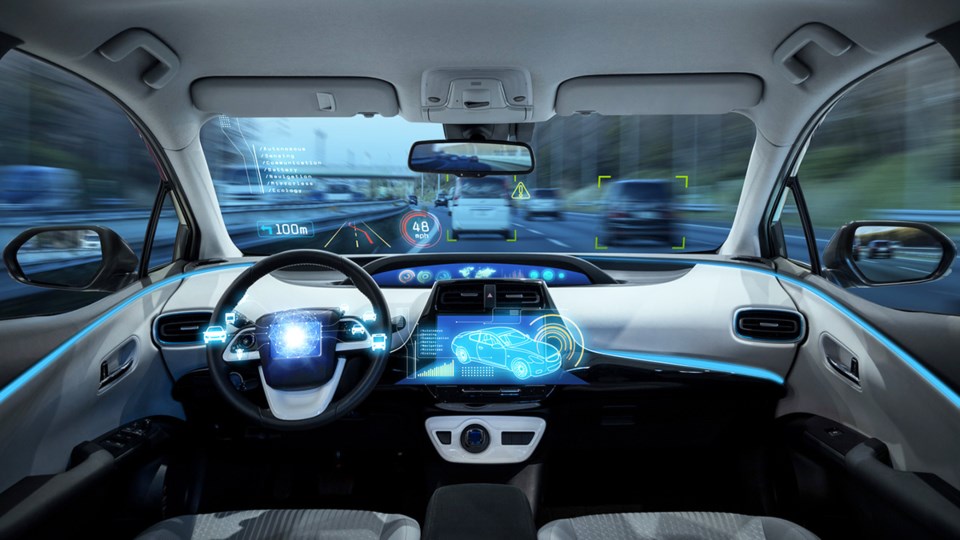What do driverless cars and Uber have to do with real estate and housing supply?
At first it might seem like a stretch to think of these elements as intrinsically linked. But a pair of tech gurus at two recent industry events, both analyzing disruptive technology in the transportation space, really opened my eyes to how such innovations could affect housing and urban planning.
First, Silicon Valley entrepreneur and energy/transportation author Tony Seba told the Vancouver RED Talks on May 31 that widely available, affordable, autonomous, electric vehicles, combined with widespread use of ride sharing, will completely disrupt the car industry. And when these stars align, it could happen over the space of just a few years.
“New York City went from all horses and buggies to all cars in 13 years. That’s how quickly disruption can happen – and this was 100 years ago,” said Seba.
“Technology adoption happens in S-curves [with slow uptake at the start, then very rapid uptake as everyone adopts the tech and it becomes affordable, then tapering off after everyone has bought into it]. Like with television in the 1950s, the tipping point is at about 10 per cent [of uptake] and then it rises to about 80 per cent in a very short amount of time. Since the 1980s, S-curves are getting faster and steeper.”
Seba explained that a “convergence” is needed for this to happen, such as the technology for a smartphone becoming affordable for the first time, combined with companies bringing the technology to market. In transportation disruption, the convergence of three elements will radically change the industry, said Seba: 1) affordable, driverless cars; 2) wide uptake of electric vehicles that are cheap to run and maintain; and 3) widespread adoption of on-demand transportation services such as Uber and Lyft.
When those three stars align, Seba said, people will no longer need to own cars, which typically sit parked and idle 96 per cent of the time. Fleets of inexpensive, electric-powered, autonomous vehicles – owned and operated by on-demand companies, not individuals – will be in constant motion, picking up and dropping off passengers, and then driving themselves to the next customer. The number of cars in operation shrink by four times, because most of the vehicles are being used all the time, which means the need for wide roads, or surface and underground parking lots, will be negligible.
“Currently, we spend $50,000 over five years to own a car, and we only use it four per cent of the time. What a waste of money!” added Seba. “TAAS – Transportation as a Service – will be on-demand, electric and autonomous. So it’s going to be a disruption. On the day that this convergence happens, and it isn’t a long way off, the cost per mile of autonomous, electric vehicles will be 10 times cheaper than the current cost per mile for a car. And 10 times cheaper has always, always caused a disruption. It won’t make any sense to own a car... For the first time in history, everyone will have mobility. And there’s a 90 per cent decrease in greenhouse gas emissions.”
So how does this affect real estate?
This kind of transportation disruption would likely have both mid-term and long-term significant effects on housing supply. First, building new housing with no parking requirements is much cheaper, and existing, disused surface parking lots and parkades across cities could be redeveloped for housing. To put all that extra space into eye-popping context, “You can fit three cities the size of San Francisco in the vacant parking space that currently exists in L.A.,” said Seba.
In the longer term, urban planners would no longer base cities around road infrastructure, instead using almost all the space available for homes, commercial and retail uses, and green spaces such as parks. High-rise development around transit hubs would still exist, but all neighbourhoods and cities would become accessible under the new transport system without any residents having to own a car.
“What are we going to do with one third of the land mass of the city that’s going to open up in the next 30 years? Do we want green parks? Yes! Do we want affordable housing? Yes! Do we want more density? Yes! We’re going to be able to redesign the urban landscape. So Vancouver – what city do you want to be?”
The collective jaws in Vancouver's Playhouse Theatre dropped at the implications of these changes.
Still, I might have been inclined to take all this blue-sky thinking with a grain of salt, had it not been almost exactly echoed by the Deloitte’s chief innovation officer Terry Stuart, just a couple of weeks later. At an Urban Development Institute lunch June 14, Stuart reiterated the assertion that take-up of autonomous, on-demand vehicles will increase exponentially, and this disruption could be just a few years away.
“You don’t need to build a parking garage [when you’re building homes],” he told the audience, largely comprised of development company delegates. “The cars just go round and round, or park themselves somewhere cheap if they’re not in use, and come to you when you need them. If some people do want to own their autonomous cars, and you need to build a small parking garage for those, you only need spaces with an inch between the cars and above the roof, as nobody is getting out of the cars.”
Stuart added, “The world has seen disruptions like this before, and the world didn’t end.”
For this non-driver who cycles to work and doesn’t have a driver’s licence, the end of the world of car ownership would be a welcome one – especially if it means more space for affordable housing and green parks.



